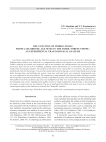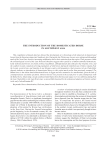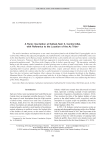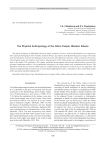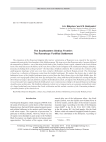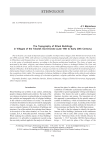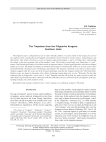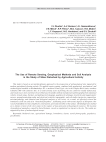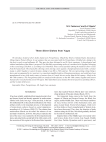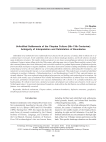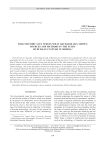The metal ages and medieval period. Рубрика в журнале - Archaeology, Ethnology & Anthropology of Eurasia
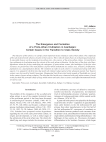
Статья научная
The objective of this article is to clarify certain important issues relating to early urban culture. The complexity of the task stems from the absence of early written sources. This is why the study draws on archaeological materials. It especially focuses on the incipient proto-urban sites—the sources of the proto-urban culture. Certain Bronze Age settlements in Azerbaijan meet the criteria of the early urban civilization. On the basis of the facts cited here, hypotheses about the factors underlying the emergence of proto-urban centers (the harbingers of the first class societies) are put forward. The main features of proto-urban settlements are surface area, structure, fortifications, population size, and population density. The evolution of crafts in such centers is reconstructed along with other aspects. It is argued for the first time that nearly all cultural values typical of the advanced ancient Near Eastern centers were borrowed by South Caucasians. Monumental Late Bronze Age burial mounds of Karabakh are viewed in the context of proto-urban evolution. The idea that elite burials were connected with early urban centers is based on the fact that only powerful chiefs of large tribal unions and early class societies could afford monumental burials on such a scale.
Бесплатно
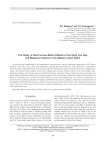
Статья научная
We describe the morphological and quantitative characteristics, and the elemental composition, of 23 bronze artifacts, seven silver ones, and a gold adornment, spanning the period from late 11th century BC to 15th century AD. These items (adornments and tools) belong to the Uril and Talakan cultures of the Early Iron Age, Mikhailovka, Mohe, and Central Asian cultures of the Early Middle Ages, and the Ducher culture of the Late Middle Ages. Elemental analysis of the bronze items at the SB RAS Institute of Nuclear Physics Siberian Center for Synchrotron and Terahertz Radiation Station of Local and Scanning X-Ray Fluorescence Elemental Analysis showed that over about 2.5 thousand years, tin-lead or lead-tin bronze was used for manufacture. Also, the best convergence of concentrations of chemical elements for Talakan and Mikhailovka artifacts testifies to evolutionary continuity between the Talakan and Mikhailovka cultures. Analysis of the elemental composition of Mohe silver and gold items from the Amur basin was carried out for the first time, revealing the high purity of precious metals used for manufacturing early medieval jewelry.
Бесплатно
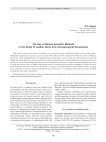
The use of natural scientific methods in the study of leather items from archaeological excavations
Статья
Бесплатно
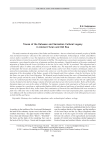
Traces of the Dahaean and Sarmatian cultural legacy in Ancient Turan and Old Rus
Статья
This study examines the migrations of the Dahae and Sarmatians—the two related early nomadic peoples of Middle Asia and Eastern Europe—directed to the south and west of their homeland. Archaeological, written, and folkloric sources make it possible to trace the migrations of the Dahae and Sarmatians over several centuries preceding the spread of Islam in Central Asia and of Christianity in Old Rus. The study focuses on mortuary monuments, temples, and sanctuaries, cross-shaped in plan view, of migrants and their descendants. A detailed analysis of the major southward migration of Dahae from the Lower Syr-Darya in the late 3rd to early 2nd BC is presented. This migration had a considerable effect on ethnic and cultural processes in Middle Asia. The migration aimed at conquering the lands of Alexander the Great’s descendants, who were rapidly losing control over them. Features of Dahaean culture are noticed in town planning, architecture, mortuary rites, armor, etc. over the entire territory they had captured. Southward migration of the descendants of the Dahae—people of the Kaunchi and Otrar cultures—from the Syr-Darya, led by the Huns, was part of the Great Migration. The Kaunchi people headed toward the oases of Samarkand and Kesh, the Otrar people toward the oasis of Bukhara, and those associated with the Dzhetyasar culture toward the Qarshi oasis. It is demonstrated that while the cross-shaped plan view of religious structures turned into the eight-petaled rosette, the fu neral rite did not change, remains of burials and charcoal are observed everywhere. Relics of the ScythoSarmatian legacy are seen in the culture of Old Rus. For instance, remains of the sanctuaries of Perun are walls and ditches arranged in a cruciform or eight-petaled fashion, fi lled with charcoal and bones of sacrifi ced animals, with a statue of the supreme Slavic deity, in the center. Early sanctuaries of Perun in Kiev and Khodosovichi were cruciate in plan view, while later ones on the banks of the Zbruch and the Volkhov rivers had octopetalous plans. Apparently they were infl uenced by the architectural traditions of Dahae and Sarmatians, who took part in the ethnogenetic processes in both Old Rus and Turan.
Бесплатно
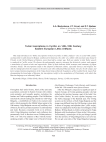
Turkic inscriptions in Cyrillic on 14th-15th century eastern European Lithic artifacts
Статья обзорная
Бесплатно
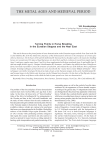
Turning points in horse breeding in the Eurasian steppes and the Near East
Статья обзорная
Бесплатно
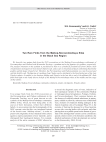
Two rare finds from the Maikop-Novosvobodnaya sites in the Black Sea region
Статья обзорная
Бесплатно
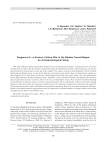
Vengerovo-2-A Krotovo culture site in the Baraba forest-steppe: an archaeozoological study
Статья научная
This study addresses faunal remains from Vengerovo-2 in the Baraba forest-steppe—a Bronze Age site associated with the Krotovo culture. We describe the origin of the sample, the distribution of bones in the living space, the species and skeletal parts represented, and the age of the animals. The sample consists of small fragments, which are likely butchering and kitchen waste, as well as the leftovers of production and rituals. Bones of domesticated animals are more frequent (62 %) than those of wild ones. Skeletal parts from utility pits (pelvic bones, ribs, and appendicular bones) differ from those found in production areas—mandibles, crania, and entire skeletons. Presumably, pits contained food, and production areas were places where work was accompanied by rituals. The reconstructed animal breeding system indicates its domestic nature, centered on sheep and goats, with a small number of horses and cattle. Hunting large prey (elk and roe deer) was important, and the same is true about fur animals (fox and marten) and waterfowl. The procurement of peltry, hides, and leather were principal occupations. Bone tools were made mostly from elk bones. Results of correlation analysis suggest that in terms of composition, the faunal sample was largely similar to those from contemporaneous Krotovo and Yelunino sites.
Бесплатно
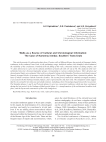
Статья
This article presents 44 radiocarbon dates from 18 water wells of different Bronze Age periods at Kamennyi Ambar settlement, in the southern Trans-Urals. At the preliminary stage, statistical outliers were identifi ed, which enhanced the reliability of the conclusions. Potsherds from the fi lling of the wells, contextual analysis of dating samples, and 14C dates allowed us to carry out the cultural attribution of nearly all wells (31 out of 34). The analyzed wells were subdivided into four chronostratigraphic groups corresponding to various settlement phases. Their duration and chronological limits were estimated. Most wells were found to belong to the Sintashta-Petrovka period (densely spaced linearly arranged blocks of structures inside fortifi ed areas). This period comprised three construction phases, the latest of which correlates with the Petrovka ceramics. The second period, marked by randomly arranged structures, is associated with the Srubnaya-Alakul artifacts, and is represented by only four wells. The simulation results suggest that the site existed for less than one and a half centuries, including a short chronological gap between the two periods. The Sintashta (phases 1 and 2) and Petrovka (phase 3) were two consecutive traditions, which may have overlapped during the late period. In the Srubnaya-Alakul period (phase 4), a transformation of the architectural tradition took place, and the layout and construction of the wells changed too.
Бесплатно

